

Helping Your Dog Adjust to Back-To-School Changes
Control in the
by Jessica Waugh











Helping Your Dog Adjust to Back-To-School Changes
Control in the
by Jessica Waugh








I told my daughter to wear her new jeans. She said, “Those are emotional support jeans, and I’m not ready to use them yet.” I did not argue.
- Brittany N.

We practiced waking up early all week. By Monday, I was feeling prepared. My son? Not so much. He rolled over, looked at me, and muttered,“I’m quitting second grade.”Honestly, same, buddy. Same.
- Derek H.
I put a heart sticker on my son’s sandwich bag. At pickup, he said, “Mom… don’t do that again. People saw.” Then he paused and added, “But it was kinda cool.” I’ll take the win.


- Elise N. At orientation,kindergarten I accidentally put my own name tag on my son. For the first half-hour, the teacher called him “Tina.” He rolled with it. “Tina had a good day,” she said.
- Tina M.

It was “Dress Like Your Future Career” Day. My son went as a ninja. When I reminded him that ninjas aren’t exactly real jobs, he said, “Not with that attitude.”
- Aaron F.

This morning, I was rushing my 6-year-old out the door when I noticed something was… off. He was wearing one sneaker and one dress shoe. When I asked him why, he shrugged and said, “One is for gym. One is for style.” I let him go like that. He was confident. And honestly? I’ve worn worse combinations in carpool drop-off.
- Amanda R.



The life I’ve been given Oh let me not waste Help me to do
Though not in haste Lord give me the grace As I learn and grow To know when to leap And the patience to flow Though my days are less Than years ago Let the wisdom gained Be a gift that is sown To those much younger And ready to run Take time to listen And know you are loved




Rae Indigo, is an esteemed yogi and martial artist known worldwide for her unique courses on wellbeing, including mind science, meditation, and breathwork. As a biochemist, she also pioneered a line of high-end, organic skincare. When she’s not teaching others how to live stress-free, she’s likely surrounded by the love of her three feisty Pomeranians.

Staying hydrated is super important for everyone, especially for kids with unique health needs. Drinking plain water can sometimes feel boring, but adding fresh fruits and vegetables can turn it into a colorful, tasty treat! Fruit and veggie waters are easy to make, budget-friendly, and a great way for kids and parents to get creative together. Plus, they’re packed with flavor without added sugars or artificial ingredients. Let’s dive into the world of infused waters and share some simple, delicious recipes that families can enjoy.
Infused waters are a fantastic way to make hydration fun. They’re naturally low in calories, free from harmful additives, and can be tailored to suit different tastes or dietary needs. For kids with sensory sensitivities or dietary restrictions, these waters can be a gentle way to introduce new flavors. The process of making them is also a wonderful opportunity for kids to participate, whether it’s picking out ingredients, stirring, or just watching the colors swirl
in the pitcher. It’s a sensory-rich activity that can spark joy and curiosity!
Before we get to the recipes, here are a few tips to make your fruit and veggie water adventure a success:
• Use Fresh Ingredients: Fresh fruits, veggies, and herbs give the best flavor. If possible, choose organic to avoid pesticides, especially for sensitive tummies.
• Get Creative: Let your child pick their favorite fruits or veggies. This can make them more excited to try the final product.
• Make It Accessible: For kids with motor challenges, use easy-grip tools like large spoons or pitchers with handles. If your child uses a wheelchair, set up a low table for them to help mix or add ingredients.
• Let It Sit: Infused waters taste best after sitting for 1–4 hours in the fridge. The longer they sit, the stronger the flavor.
• Stay Safe: Always wash produce thoroughly. If your child has swallowing difficulties, strain the water to remove any small bits.
• Have Fun: Add colorful straws, fun cups, or even ice cubes with fruit frozen inside to make drinking extra exciting!
Here are three easy recipes that kids and parents can make together. Each one is colorful, flavorful, and perfect for a refreshing sip any time of day.
This bright and zesty water is like sunshine in a glass! It’s perfect for kids who love a tangy kick.
Ingredients (makes about 1 liter):
• 1 orange, sliced
• 1 lemon, sliced
• 1 lime, sliced
• Optional: A few fresh mint leaves for extra freshness
• 1 liter of cold water
Instructions:
• Wash the orange, lemon, and lime thoroughly.
• Slice the fruits into thin rounds. If your child wants to help, guide them with a kidsafe knife or let them place the slices in a pitcher.
• Add the slices and mint leaves (if using) to a large pitcher.
• Pour in the cold water and stir gently with a spoon.
• Pop the pitcher in the fridge for 1–2 hours to let the flavors meld.
• Serve in fun cups with a colorful straw. For kids with sensory sensitivities, you can strain out the fruit pieces for a smoother drink.
Why Kids Love It: The bright colors and tangy taste make this a hit. Plus, the mint adds a cool, refreshing twist!
This sweet and vibrant water is perfect for kids who love berries. It’s naturally sweet and looks like a pink party in a glass.
Ingredients (makes about 1 liter):
• 1 cup mixed berries (strawberries, blueberries, raspberries)
• ½ cucumber, sliced (optional for a crisp touch)
• 1 liter of cold water
Instructions:
• Rinse the berries and cucumber well. If using strawberries, cut them into smaller pieces for more flavor.
• Let your child drop the berries and cucumber slices
into a pitcher. This is a great task for little hands!
• Fill the pitcher with cold water and stir gently. Chill in the fridge for 2–4 hours to let the berry flavors shine.
• Pour into cups and enjoy! For kids who prefer less texture, mash the berries slightly before adding to release more flavor, then strain if needed.
Why Kids Love It: The pinkish-red hue and sweet berry taste make this feel like a treat. It’s a great way to introduce cucumbers for picky eaters.
This summery water is light, sweet, and super refreshing. It’s a great choice for hot days or when you want something extra special.
Ingredients (makes about 1 liter):
• 1 cup watermelon, cubed (seedless is easiest)
• 5–6 fresh mint leaves
• 1 liter of cold water
Instructions:
• Wash the watermelon and cut it into small cubes. If your child can help, let them scoop the cubes into the pitcher.
• Gently tear the mint leaves to release their flavor and add them to the pitcher.
• Pour in the cold water and stir. Refrigerate for 1–3 hours for the best taste.
• Serve in a clear glass so kids can see the pretty pink water. Add a fun straw or a watermelon slice on the rim for extra flair.
Why Kids Love It: Watermelon is a kid-favorite, and the mint makes it feel fancy. It’s like a mini vacation in every sip!
Creating infused waters can be a bonding experience for families. Here are a few ways to make it inclusive and fun:
• Sensory Play: Let kids touch and smell the fruits and herbs before adding them. This can be calming and engaging for kids with sensory processing needs.
• Story Time: Make up a story about the “magical” water you’re creating. For example, the Citrus Splash could be a “sunshine potion”!
• Adapt for Abilities: For kids with limited mobility, use adaptive tools like widemouth pitchers or let them choose flavors by pointing or using a communication device.
• Celebrate Success: Praise your child for helping, whether they added one slice or just watched. Every step counts!
Infused waters are a simple way to encourage kids to drink more water while exploring new flavors. They’re also a budgetfriendly alternative to sugary drinks, which can be especially helpful for families managing medical expenses. By involving your child in the process, you’re not only teaching them about healthy choices but also creating happy memories together. So, grab a pitcher, pick some fresh fruits and veggies, and start mixing!

By: Alexis Fellows

Ah, back-to-school season. That magical time of year when fresh notebooks smell like potential, alarm clocks scream like banshees, and the search for matching socks becomes a daily test of patience and flexibility.
Whether you’re a wide-eyed kindergartener, a toocool-for-this sixth grader, or a parent who barely survived summer break this guide is for you. It’s part helpful, part hilarious, and totally built to make this season less chaotic and more connected.
Let’s be real. Mornings are like obstacle courses with toast. The clock is your enemy, shoes are mysteriously invisible, and someone always forgets something.
Parent Tip: Create a “Launch Pad” near the front door. This is the spot where backpacks, lunches, permission slips, and mystery library books live. No one leaves the house until they’ve passed the Launch Pad Test.
Kid Tip: Want to impress your parents? Set out your clothes the night before. It’s like magic. One less argument, one more minute of morning cartoons.
Interactive Challenge:
Take the “7-Day Smooth Start” challenge. Try waking up on time, getting dressed, and packing your stuff without being asked. If your family survives, celebrate with pancakes on Saturday!
You could pack organic, heartshaped sandwiches with motivational napkin notes… or you could throw in last night’s leftover pizza and hope no one trades it for Takis.
Parent Tip: Don’t stress the
Pinterest lunch. Focus on balance: one protein, one fruit or veggie, one “fun” snack, and water. Add a sticky note that says, “You’re doing great!” Even if it’s meant for not only your child but you as well.
Kid Tip: If you pack your own lunch, you get to pick your snacks. Just don’t put only cookies. Seriously. Protein matters.
Interactive Game:
Have a family “Lunchbox BuildOff.” Everyone makes their best lunch, then vote on Most Creative, Most Nutritious, and Most Likely to Actually Be Eaten.
Homework is the villain in many households. It’s the broccoli of

childhood responsibilities. But it doesn’t have to destroy your evenings.
Parent Tip: Create a calm, techfree “Homework Zone.” Have snacks ready, and give them a 15-minute “chill buffer” after school before diving in.
Kid Tip: Use the timer method: 20 minutes of focused work, 5-minute break. Repeat. Boom— your brain will thank you.
Create a family “Homework Playlist.” Chill, lyric-free music that helps everyone focus. Bonus points if your child helps pick it!
Back-to-school can be exciting, but it can also be overwhelming. New classrooms, new routines, new social dynamics—it’s a lot!
Parent Tip: Ask open-ended questions at dinner. Instead of “How was school?” try “What made you smile today?” or “What was the weirdest thing that happened?”
Kid Tip: It’s okay to have big feelings. Talk about them. Draw them. Shout them into a pillow. Just don’t bottle them up.
Interactive Tool:
Create a family “Feelings Chart” on the fridge. Use magnets or stickers to check in each day. Normalize emotional honesty— it builds stronger kids and parents.
Soccer, dance, robotics, piano, debate, scouts… It’s all amazing until you’re spending more time in your car than in your own home.
Parent Tip: Pick one or two activities per season. Let your child try, fail, quit, or love it—just don’t overschedule. You deserve a weekend too.
Kid Tip: Try new things! But also speak up if you’re overwhelmed. You don’t have to do everything to be awesome.
Interactive Task:
As a family, create a “Weekly Rhythm Chart.” Use color codes to block school, activities, chores, fun, and downtime. Everyone sees the full picture—and no one double books Thursday ever again.
If summer bedtime was “whenever,” then back-to-school bedtime is “We should’ve started this 30 minutes ago.”
Parent Tip: Start the bedtime wind-down 45 minutes before lights out. That means no screens, dim the lights, and bring in the calming routines.
Kid Tip: Night routines aren’t lame. They’re power-ups for your brain. Plus, you dream better when your room is calm and clean. (Yes, that means clothes off the floor.)

Interactive Game:
Have a “Sleep Scoreboard.” If the whole family meets bedtime goals all week, reward yourselves with a Friday family movie night in pajamas.
Got out the door with both shoes? Celebrate. Finished homework without tears? High five. Made a new friend? Ice cream time.
Parent Tip: Back-to-school isn’t about perfection—it’s about showing up. You’re doing better than you think. Say it out loud: I’m doing a good job.
Interactive Journal Prompt:
Keep a “Family Wins Journal” on the kitchen table. Each day, write down one win from school, home, or life. Reread them whenever you need a boost.
Back-to-school doesn’t have to be a battlefield. With a little laughter, a lot of patience, and a team mindset, you and your kids can tackle this season with confidence. Remember, it’s not about doing everything perfectly—it’s about doing it together.
Kid Tip: Celebrate your wins, big and small. Share them with your family. You’ll feel proud—and that energy carries you into the next challenge.
Now go forth, brave parents and bold kiddos. May your coffee stay strong, your pencils stay sharpened, and your sanity stay (mostly) intact.

Jennifer Affronti is a former model, actress, stage performer, television personality and burlesque dancer. Her personal journey through chronic illness led her to completely change her career path to become a resource and advocate for people who want to live happier, healthier and more fulfilling lives. She is now a certified Holistic Health Coach and the founder of Wholelistically Healing, where she focuses on empowering individuals to take control of their health and well-being through personalized coaching and guidance.

With the school year and autumn coming up, I thought I would share this recipe that is healthy and doesn’t take a long time to make. Normally I would bake the chicken separately, but for today, I made it all together and it was just as fabulous. Also for those of you with high histamines, this is very low in histamines. This is the perfect comfy cozy dinner. I hope you enjoy it!
Are you ready to make an amazing meal for you and your loved ones? First things first, let’s get happy!! You will hear me say this over and over. Reason being is I truly believe everything is energy, and when you are in a good mood, it translates into the food you are preparing. I am known to do silly little dances in the kitchen while I am cooking. I like
to turn on music or an inspiring podcast and I even say a quick prayer. That’s my secret to cooking.
What you will need:
• 1 large bowl and 1 small bowl
• 1 sheet pan with parchment paper
• 4 chicken cutlets or 1 lb of chicken tenders
• 16 oz of frozen cubed butternut squash
• 2 apples cubed (I used Gala, but this is also great with Granny Smith)
• ½ chopped white onion
• 2 Tablespoons of Olive oil
• 4 cloves of minced garlic
• 1 Tablespoon of ground stone mustard
• ¼ teaspoon of ground cloves
• ½ teaspoon of fresh chopped thyme
• ½ teaspoon of fresh chopped sage
• ½ teaspoon of fresh chopped rosemary
• 1 teaspoon of sea salt
• ½ cup of almond slices
Directions:




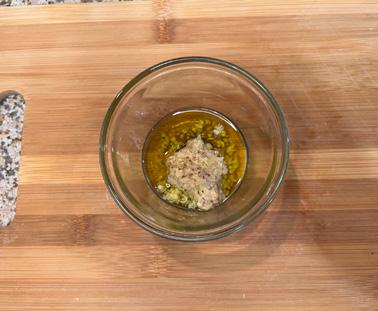
1. Preheat the oven to 400’ and make sure to defrost your butternut squash and chicken.
2. In a small bowl mix together your mustard,
olive oil, garlic, clove, thyme, sage, rosemary and sea salt.
3. In the large bowl, add your chicken, cubed butternut squash, cubed apple pieces and chopped onion. Pour your olive oil and spice mixture over the chicken and butternut squash and apples and mix thoroughly together and evenly coat.

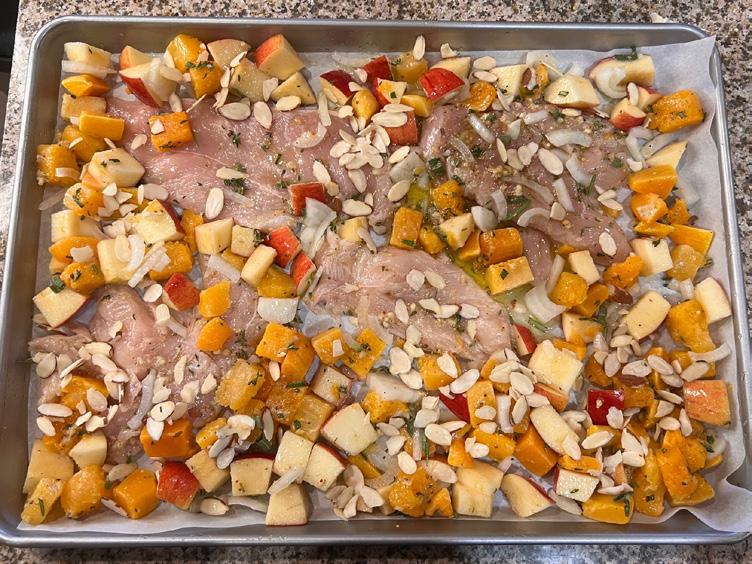

4. Place everything on your sheet pan with parchment paper and space everything out. Once everything is on your sheet pan, then I sprinkle the almond slices on top.
5. Bake for 12-14 minutes.
6. ENJOY!!!

By: Jessica Waugh

August arrives with new school supplies, packed calendars, earlier alarms, and the quiet pressure to hold it all together. But for many women, this season isn’t just about getting kids out the door, it’s the annual return of over-scheduling, over-functioning, and putting ourselves last. What’s framed as a fresh start often becomes a fast track to burnout if we’re not careful.
If you’re feeling more stretched thin than refreshed, you’re not alone. This time of year often reactivates what I call “quiet stress layering”, those small, everyday stressors that quietly pile up and activate your fightor-flight system.
If you’re also navigating the hormonal shifts of perimenopause or menopause, that quiet layering of stress doesn’t just feel like pressure, it can feel like overwhelm, irritability, fatigue, anxiety, restless sleep, intense sugar cravings, and emotional burnout.
The good news? You don’t need a full-blown retreat to reset your nervous system. Sometimes, all it takes is 10 intentional minutes and the willingness to choose yourself.
Cortisol is often called the “stress hormone,” but it’s not a villain, it’s actually meant to help us. It gives us energy in the morning, helps us stay alert in high-pressure moments, and is part of how our body responds to challenges.
But today’s challenges rarely come in short bursts. Instead, the pressure is constant: unread emails, carpool chaos, group texts, family needs, and the silent expectation to handle it all with grace.
For women in perimenopause and menopause, these stressors can feel even heavier. As estrogen and progesterone begin to fluctuate or decline, the body’s natural checks and balances for cortisol shift too. This can leave us feeling wired, worn out, or overwhelmed, and sometimes all in the same day.
When we keep saying yes to every request, every plan, every need that isn’t our own, it’s not just time and energy we’re giving away, it’s our hormonal balance.
Perimenopause is the transitional phase before menopause, and it can begin as early as your mid-30s or 40s. While menopause is just one day, the 366th day without a period, perimenopause is the phase where your hormones start to shift, sometimes quietly, sometimes dramatically.
During this time, estrogen and progesterone levels fluctuate, which can impact everything from your mood to your energy to how your body handles stress. You might notice things like disrupted sleep, shorter cycles, heavier or lighter periods, anxiety, brain fog, or even a change in how your body tolerates caffeine, alcohol, or exercise.
The frustrating part? Many
women don’t recognize these changes as hormonal, because no one told them this was part of the process. That’s why support, education, and validation are essential. You’re not imagining it, and you’re not overreacting. Your body is transitioning, and it deserves care, not criticism.
The more you understand what’s happening internally, the more compassion you can extend to yourself as you adjust your routines, boundaries, and expectations.
Setting boundaries doesn’t have to mean sweeping life changes. It can be as simple as:
• Saying “I’ll get back to you” instead of giving an instant yes
• Blocking off 10–15 minutes in your day for you, not for a task, but for a check-in
• Letting others wait, without apologizing
• Choosing one thing this season you will not commit to, even if you feel guilty at first
Your peace is not selfish. It’s protective. Every time you create space for yourself, you’re giving your nervous system a chance to recalibrate.
If this feels hard, you’re not alone. Boundaries can bring up guilt, especially when we’ve been conditioned to meet everyone else’s needs first.
One way to start shifting this is by asking:
“Where am I overcommitting to avoid disappointing others, and what is it costing me?”
Even simply naming it gives you a starting point for change.
The 10-Minute Pause: A Hormone-Smart Reset
You might be surprised how powerful a 10-minute pause can be. Here’s a quick framework:
1. Step away: Get somewhere quiet, even if it’s the bathroom or your parked car.
2. Check in: Ask yourself, “What do I need in this moment?”
3. Respond: Maybe it’s a deep breath. Maybe it’s a walk. Maybe it’s nothing, and that’s okay too.
4. Affirm: Remind yourself: “A

few minutes for me now means I’m not running on empty later, and I have more to give everyone else.”
These micro-moments of awareness help lower cortisol, rebalance your nervous system, and build the foundation for sustainable wellbeing.
This back-to-school season, I encourage you to redefine what “being on top of it” means. Maybe it’s:

• A freezer stocked with easy meals, instead of gourmet dinners
• Asking for help, without needing to justify it
• Making a “to-don’t” list of things you refuse to overextend for this year
• Scheduling a solo coffee date, just because
Support doesn’t always look like more help. Sometimes it looks like less expectation.

If you’ve been feeling off, shorttempered, or more exhausted than usual, you’re not crazy, and you’re not weak. Your body is wise, and it’s asking for something different this season.
When you honor your bandwidth, listen to your hormonal shifts, and build in moments of pause, you’re not falling behind, you’re moving forward with intention.
You don’t need to overhaul your life to feel better. You just need

to stop abandoning yourself in the name of productivity.
This August, choose you, not last, not later, but now.
If you’re not sure where to begin, try starting with one of these simple shifts:
• Replace one obligation with something nourishing, even if it’s just 15 minutes alone.
• Keep snacks or meals prepped that support your blood sugar and mood.
• Say “no” or “not right now” once this week without overexplaining.
• Set a recurring reminder to check in with your needs, not your to-do list.
• Protect your bedtime like it’s an important meeting (because it is).
Jessica Waugh is a National Board-Certified Health and Wellness Coach and Certified Menopause Lifestyle Practitioner. Through her work at JWaugh Wellness, she helps women identify the habits hijacking their hormones and reclaim their wellbeing with clarity, compassion, and confidence. Explore more at www.jwaughwellness.com.

Every year on August 19, we honor World Humanitarian Day—a global recognition of those who dedicate their lives to helping others, often in the face of danger, disaster, and despair. It’s a day to celebrate courage, compassion, and the unwavering commitment to serve those in need.
When we think of humanitarians, we may picture doctors in war zones, aid workers in disaster areas, or global peacekeepers. And yes—these are heroes of the highest order. But this day also shines a light on the quiet humanitarians—the everyday people whose kindness, resilience, and actions shape the heart of our communities.
In a world that often feels divided, humanitarianism reminds us of our shared humanity. Whether it’s someone delivering meals to a homebound neighbor, organizing a school supply drive, or simply sitting with someone who’s hurting, each act of service sends a message: You matter. You are not alone.
This year’s World Humanitarian Day theme is a powerful one: “It takes a village.” No one person can solve the world’s problems alone. But together—through small, consistent, meaningful actions—we can create real change. We don’t need a title, a uniform, or a spotlight to be humanitarians. We just need heart.
And often, the most powerful examples of humanitarian spirit come from those who have endured hardships themselves. Survivors who turn their pain into purpose. Volunteers who once needed the same help they now give. Families who show up for others even when their own plates are full. These are the stories of perseverance that inspire and uplift us all.
At Stories of Perseverance, we believe humanitarianism is rooted in everyday courage— the courage to care, to act, to keep showing up even when it’s hard. And it doesn’t take a grand gesture to make a big difference. Smiles, meals, warm words, open arms—these are the bricks that
build stronger communities.
So how can we honor this day? Start simple:
• Thank a helper: Send a message to a nurse, teacher, social worker, or neighbor who’s made a difference.
• Be a helper: Look for a local cause that resonates with you and lend your time or voice.
• Teach the next generation: Talk with your children about empathy, fairness, and the joy of giving.
This August 19, let’s commit to lifting others up—whether they live across the globe or across the street. Let’s remember that humanitarianism isn’t about headlines; it’s about heart. And in a world that can sometimes feel overwhelming, choosing kindness is an act of bravery.
To every soul who serves quietly, gives selflessly, and stands in the gap for others—thank you. Your perseverance is a beacon. And your heart is changing the world.
Every year on August 26, we pause to recognize Women’s Equality Day, marking the historic certification of the 19th Amendment, which granted women the right to vote in the United States. It’s a day to reflect on how far we’ve come, and more importantly, how far we still need to go. But this isn’t just a moment to look back—it’s a call to action. Each of us has the chance to carry this legacy forward by becoming role models for the next generation of girls who are growing up watching how we treat each other, how we lead, and how we respond to injustice.
Being a role model isn’t about perfection. It’s about authenticity. It’s showing up with honesty, strength, and compassion. It’s about speaking up when it’s uncomfortable and making room for others when the spotlight is on us. Girls don’t need flawless idols—they need real-life examples of resilience,
kindness, and courage.
Whether you’re a mom juggling work and home, a teacher shaping young minds, a community volunteer, or a business owner paving your own path—your influence matters. Every action, every word, every small stand for fairness sends a message that someone is watching, learning, and believing that they can do it too.
And here’s the truth: we are stronger when we stand together. For far too long, society has encouraged competition among women who’s doing more, achieving faster, looking better. But unity is our true superpower. When we lift each other up, when we celebrate each other’s wins, and when we show up for one another in hard times, we become unstoppable.
This solidarity isn’t just empowering for us it’s transformational for the girls
watching from the sidelines. It teaches them that being a woman doesn’t mean going it alone. It means being part of a tribe, a team, a sisterhood that believes in collective success.
On this Women’s Equality Day, ask yourself: What example am I setting? Am I encouraging the next generation to lead with heart? Am I modeling what it looks like to speak with courage, to act with integrity, to support other women with no strings attached?
Because the truth is, we don’t need to be in politics or on a stage to create change. We do it in carpool lanes, in classrooms, in conversations, and in the way we show up for our families and communities. So let’s keep moving forward not just for ourselves, but for every girl who dreams of a world where her voice is heard, her choices are respected, and her potential is limitless.

By: Crystal Perras

August often feels like standing at the edge of two worlds: one foot in carefree summer, the other tiptoeing into the busy rhythms of school and schedules. While we pack away pool floats and organize backpacks, there’s a powerful way to keep the warmth of summer alive through acts of kindness.
What if we turned the end of summer into a family kindness adventure?
Welcome to the Family Kindness Quest, an interactive journey designed to build connection, gratitude, and compassion, one simple act at a time.
Kindness is like sunshine: it warms hearts, helps people grow, and spreads quickly when shared. Teaching kids (and reminding ourselves!) to lead with kindness strengthens empathy, builds confidence, and gives us all a sense of purpose.
As summer ends and changes
begin, focusing on kindness can help families navigate transitions with open hearts instead of stress or worry.
Start by gathering as a family around the kitchen table. Pull out a large sheet of paper or poster board and draw a big heart in the center.
Inside the heart, write your family’s shared kindness mission.
Examples include:
• “Spread kindness wherever we go.”
• “Leave people better than we found them.”
• “Kindness is our family superpower.”
Then, draw lines out from the heart like rays of sunshine. On each line, write ideas for acts of kindness. Encourage every family member to suggest ideas even the smallest hands have the biggest hearts!
Some starter ideas:
• Leave an encouraging note on a neighbor’s door.
• Pick up litter at the local park.
• Drop off flowers or homemade treats to a teacher or librarian.
• Donate gently used books or toys.
• Compliment three people today.
• Send a postcard to a family member far away.
• Draw happy chalk art on the sidewalk for passersby to enjoy.
Hang your kindness map somewhere visible — like on the fridge or in a hallway — as a daily reminder.
Choose one day a week (maybe “Kindness Thursdays” or “FeelGood Fridays”) to focus on completing an act of kindness together.
Make it a fun, family event play happy music on the drive, wear matching “kindness adventure” bracelets or pins, or bring along a camera to document your experiences.
Afterward, sit together and talk about how it felt to give. Did anyone’s reaction surprise you? Did it create new ideas for next week? By reflecting together, you deepen the emotional impact and help your children internalize the joy of helping others.
Give each family member a small journal or notebook (even a folded stack of papers works!). After each kindness activity, invite everyone to draw or write about their experience.
Prompts to get started:
• What made you smile today?
• How did the person react?
• How did you feel afterward?
• What would you like to do next?
For little ones, let them draw their favorite moments. You’ll be amazed at the sweet details they capture a neighbor’s smile, a thank-you wave, or a new friend they met.
At the end of the month celebrate your kindness journey. Hold a special “Kindness Celebration Night.”
Here’s how:
• Read journal entries or show drawings.
• Look back at photos taken
during your acts of kindness.
• Make a favorite family meal or order a special treat.
• Share the funniest, most unexpected, or most heartwarming moments.
While the Kindness Quest starts as a fun project, it can grow into a family tradition that lasts beyond August. Hang up a permanent “Kindness Wall” at home, where family members can post sticky notes with kind things they did or saw each week.
You can even create a “Kindness Jar” — each time someone does something kind, add a marble or pebble. When the jar is full, celebrate with a family outing or treat.
Throughout your quest, keep the conversation going with simple, open-ended questions:
• “What does kindness mean to you?”
• “When was a time someone was kind to you? How did it make you feel?”
• “Is it always easy to be kind? Why or why not?”
• “How can we show kindness to ourselves, too?”
These discussions help children (and us grown-ups) develop deeper empathy and understand the ripple effect of even the smallest gestures.
Kindness connects us not only
to others but also to ourselves. It teaches us to slow down, notice people around us, and choose love over frustration.
For kids, acts of kindness build self-esteem. They see that they have the power to make someone’s day brighter, no matter how small they are.
For parents, it’s a powerful way to model core family values and create moments of togetherness that feel both fun and deeply meaningful.
As summer drifts into fall, kindness helps bridge the gap between play and routine, long sunny days and structured school mornings.
Imagine your child walking into their first day of school with the confidence of someone who knows they can brighten someone else’s day with a simple compliment.
We can’t hold on to every summer sunset or every carefree moment. But we can carry forward its warmth in our hearts.
The Family Kindness Quest is more than a project; it’s a reminder that every season can be filled with sunshine if we choose to create it.
So, grab your markers, and your biggest smiles. Build your kindness map, collect your journals, and get ready to fill your community and your family with love, laughter, and light.



August is a season of transitions. The sun is still out, laughter echoes through backyard sprinklers, and ice cream drips faster than we can eat it. But as the mornings turn cooler and backpacks reappear, we start to feel the familiar pull toward structure and routine.
For many families, this time brings a bittersweet feeling of excitement and anxiety. Kids may feel nervous about new classrooms and friends. But what if, instead of dreading the change, we chose to embrace it?
Let’s talk about how to hold onto the warmth of summer while welcoming the school year.
Before we can move forward, it’s important to honor the season
we’re leaving behind. Take time as a family to reflect on your favorite summer moments.
Did you discover a new hiking trail? Master a new recipe on the grill? Spend endless hours chasing waves or catching fireflies with friends and family?
Create a “Summer Story Night” tradition: gather with cozy blankets, pass around popcorn, and invite each family member to share their favorite memory from the past few months. You can even create a “Summer Memories” jar write each memory on a slip of paper and keep them tucked away to revisit in the winter.
Back-to-school season isn’t just about new pencils and schedules it’s a symbolic new
beginning. Approach it as an opportunity to reset intentions for the upcoming school year.
Sit down as a family and set “Fall Intentions.” These are not resolutions but gentle goals that nurture growth and connection. Examples might include:
“I will try one new hobby or activity this fall.”
“I will remember to be kind to myself when I make mistakes.”
“I will make time for family dinners at least once a week.”
Write these intentions on colorful paper and hang them somewhere visible on the fridge, a family bulletin board, or even in each child’s room.
The act of writing them down together turns hopes into shared commitments, strengthening family bonds.
Transitions are especially big for kids. New teachers, unfamiliar classrooms, and ever evolving friendships can feel overwhelming. As parents, family and friends, one of the most meaningful gifts we can give is the language and tools to handle change with courage.
Create a “Courage Toolkit” together. This can include:
• Positive affirmations written on index cards (“I am brave,” “I can ask for help,” “I am enough.”)
• A small worry stone or token they can keep in their pocket.
• A playlist of favorite songs that lift their spirits.
Courage isn’t the absence of fear, but moving forward even when we’re scared.
Just because summer is ending doesn’t mean its joy has to vanish. Infuse school-year routines with the same playful, warm energy you loved during vacation.
Schedule “Summer Saturdays” once a month a day dedicated to spontaneous, screen-free family fun, like a picnic in the park, an indoor fort-building competition, or making s’mores in the yard.
If you loved morning or evening walks in the summer, find ways to adapt those habits to the school year. Maybe it’s a quick stroll around the block before school or a five-minute before bedtime walk. These small traditions help keep the essence of summer alive, even as
schedules fill up.
With new routines come inevitable bumps: forgotten lunches, missed buses, lastminute project scrambles. Instead of viewing these as failures, approach them as opportunities for learning and laughter.
When we as adults show grace when things get hard, our kids learn that mistakes are part of growth. A spilled milk incident can become a funny memory rather than a stressful meltdown. This mindset helps everyone embrace the season with more lightness and less pressure.
The start of school can make it harder to stay connected as a family. Between homework, sports practices, and work meetings, quality time can easily slip through the cracks.
Be intentional about creating small, consistent moments of connection. Try these ideas:
• Morning affirmations: One kind sentence shared before everyone leaves for the day.
• “High, Low, Buffalo” at dinner: Each person shares a high point, a low point, and something random or funny from their day.
• Weekly “family check-ins” where everyone can voice what’s going well and what they need support with.
These rituals don’t have to be big or time consuming it’s the consistency that makes them powerful.
As parents by, we often focus on our children’s emotions while neglecting our own. You might be feeling sadness about summer ending, excitement for a new season, or even guilt for feeling both. Give yourself permission to process this transition. Journal your feelings, share them with a friend, or take a quiet morning to reflect.
When we model openness about change, we show our children that it’s okay to feel a mix of emotions and that every feeling is welcome.
The magic of summer isn’t confined to warm weather it’s the laughter, togetherness, and spontaneity that we create. By carrying these elements forward into the school year, we remind our families (and ourselves) that joy isn’t tied to a season.
Embracing change with joy doesn’t mean ignoring the challenges. It means meeting them with open arms, curiosity, and grace. It’s about weaving summer into fall’s new routines, turning school bells into an invitation rather than an alarm.
So as you zip up backpacks and sharpen pencils, pause for a moment. Breathe in the last rays of summer, tuck those memories close, and step into the new season with warmth and courage.
By Rissa

As kids head back to school and parents return to regular routines, our furry best friends may be left feeling a little confused—and a lot more alone. Dogs thrive on structure, and sudden shifts in household schedules can lead to separation anxiety or feelings of stress. Whether you’re helping a young pup learn to self-soothe or easing the worry of an older dog, there are simple ways to make the transition easier for everyone.
Start by setting up a safe, cozy space for your dog. Choose a quiet corner of your home and place a soft bed, their favorite toy, and even an old T-shirt with your scent. This gives your dog a place to snuggle, decompress, and feel close to you even when you’re away.
If your pup is kennel-trained, you can transform their crate into a comfort zone by placing their bed, toy, and T-shirt inside. Leave the door open so they feel in control and safe coming and going.
Dogs are smart they know the signs when you’re about to leave. To soften the blow, try making your exits fun and engaging. Before you head out, hide treats or pieces of kibble around the house for a fun game of scentbased hide-and-seek. Just be sure to keep it spontaneous so it doesn’t become a predictable routine.
Another favorite? Frozen KONG toys. Fill one with peanut butter, mashed banana, or yogurt, then freeze it overnight. Give it to your pup in their cozy spot before you leave. It offers both mental stimulation and stress relief through healthy chewing.
Dogs need healthy, longlasting chews to stay mentally stimulated. Consider natural options like elk antlers, bully sticks, or Nylabones. These not
only keep them entertained but also support dental health. Be sure to:
• Choose the right size to avoid choking
• Check ingredients for safety
• Introduce new chews slowly to avoid upset tummies
• Rotate chews and toys regularly to prevent boredom
Snuffle mats are another fantastic tool—part toy, part food dish. They tap into your dog’s natural foraging instincts while encouraging focus and calm.

Believe it or not, dogs can enjoy TV! Channels like Animal Planet or Discovery Channel may help ease loneliness, and there’s even a pup-specific option called DogTV. Music also works wonders—classical composers like Bach and Mozart have been shown to calm anxiety and reduce heart rates in dogs. Even soft rock or reggae can have a positive effect. Just remember: keep the volume low. Dogs hear much better than we do.
Looking for another calming option? Aromatherapy! Diffusing essential oils like lavender,
chamomile, bergamot, or ylangylang can help reduce stress and promote relaxation. Just be sure you’re using dog-safe oils and diffusing in a well-ventilated space.
If you’re away for long hours, there are still plenty of ways to keep your dog from feeling lonely. A dog walker can provide midday interaction, or you can explore local doggy daycares for social play and supervision. By planning ahead and being thoughtful about your dog’s needs, you’re not just helping them adjust—you’re showing them how deeply they’re loved. A little preparation goes a long way in creating peace for both pets and their people.








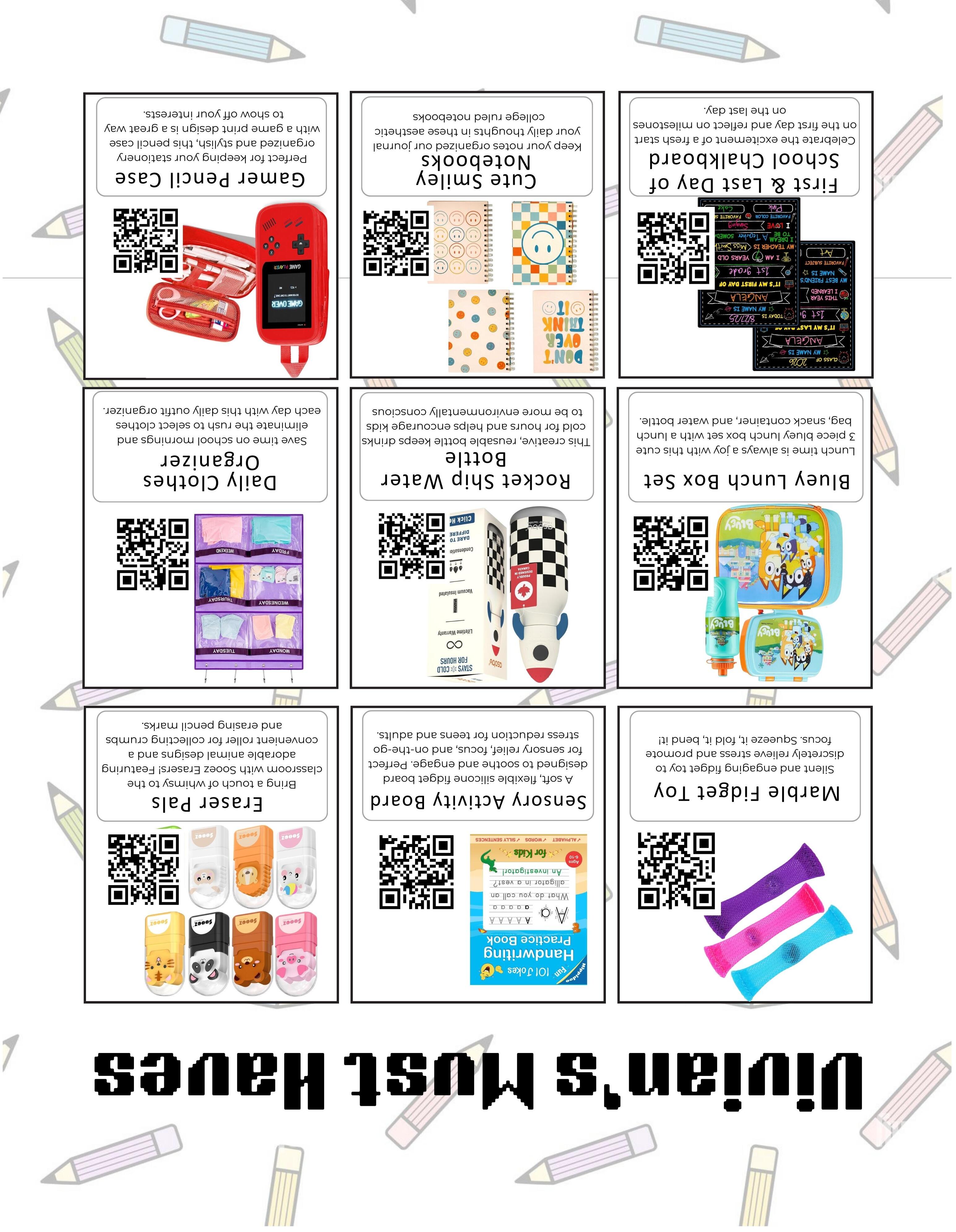
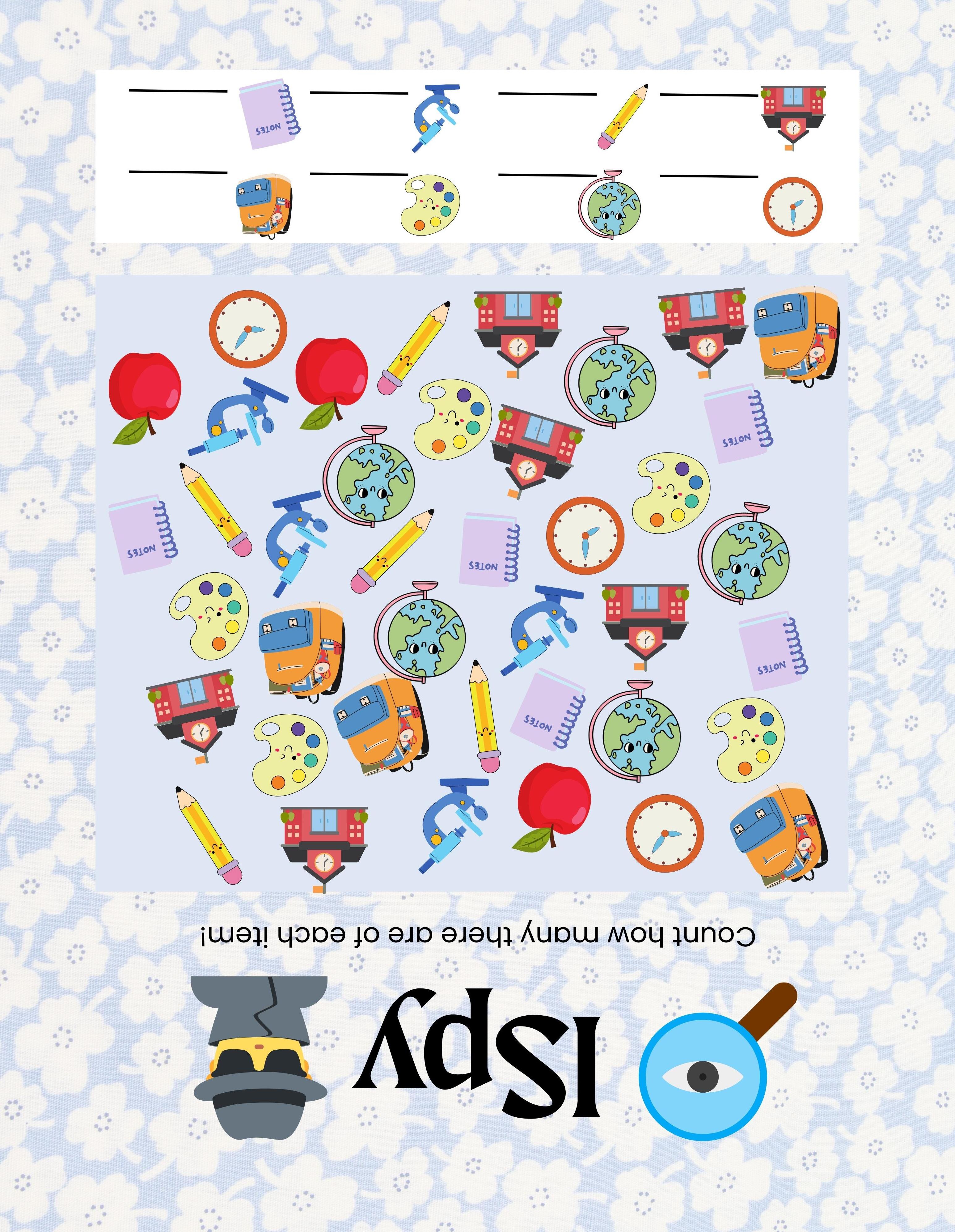

9. DECORATE each cupcake with 1 Milk-Bone® Mini’s Original dog biscuits. Makes 24 cupcakes
8. PIPE or spread on top of each cupcake.
7. DRAIN potatoes, reserving about 1/2 cup cooking liquid. Beat potatoes with hand mixer on high speed until smooth. Add yogurt. Beat until smooth and creamy. Beat in some of the reserved cooking liquid, a little at a time, just until mixture reaches spreading consistency.
6. PLACE potatoes in medium saucepan. Add enough water to cover. Bring to a boil over high heat. Reduce heat; simmer 20 minutes or until fork tender.
5. COOL 5 minutes. Remove from pans to wire rack to cool completely.
4. DIVIDE evenly into prepared muffin cups. Bake 20 to 23 minutes or until toothpick inserted in center comes out clean.
3. BEAT in flour and baking soda until blended. Stir in carrot.
2. BEAT eggs in large bowl with mixer on high speed 1 minute. Add applesauce, peanut butter and oil. Beat until blended.
1. HEAT oven to 350°F. Grease 24 muffin cups.
Instructions:

• 24 milk-bone mini’s original dog biscuits
• 1 (5.3 oz.) carton plain nonfat Greek yogurt
• 4 medium potatoes, peeled and cut into 1- to 2-inch chunks
• 3 cups coarsely shredded carrot
• 1 1/2 teaspoons baking soda
By Rissa
• 2 1/4 cups all-purpose flour
• 1/4 cup vegetable oil
• 1/3 cup squeeze peanut
• 1 cup unsweetened applesauce
• 4 large eggs

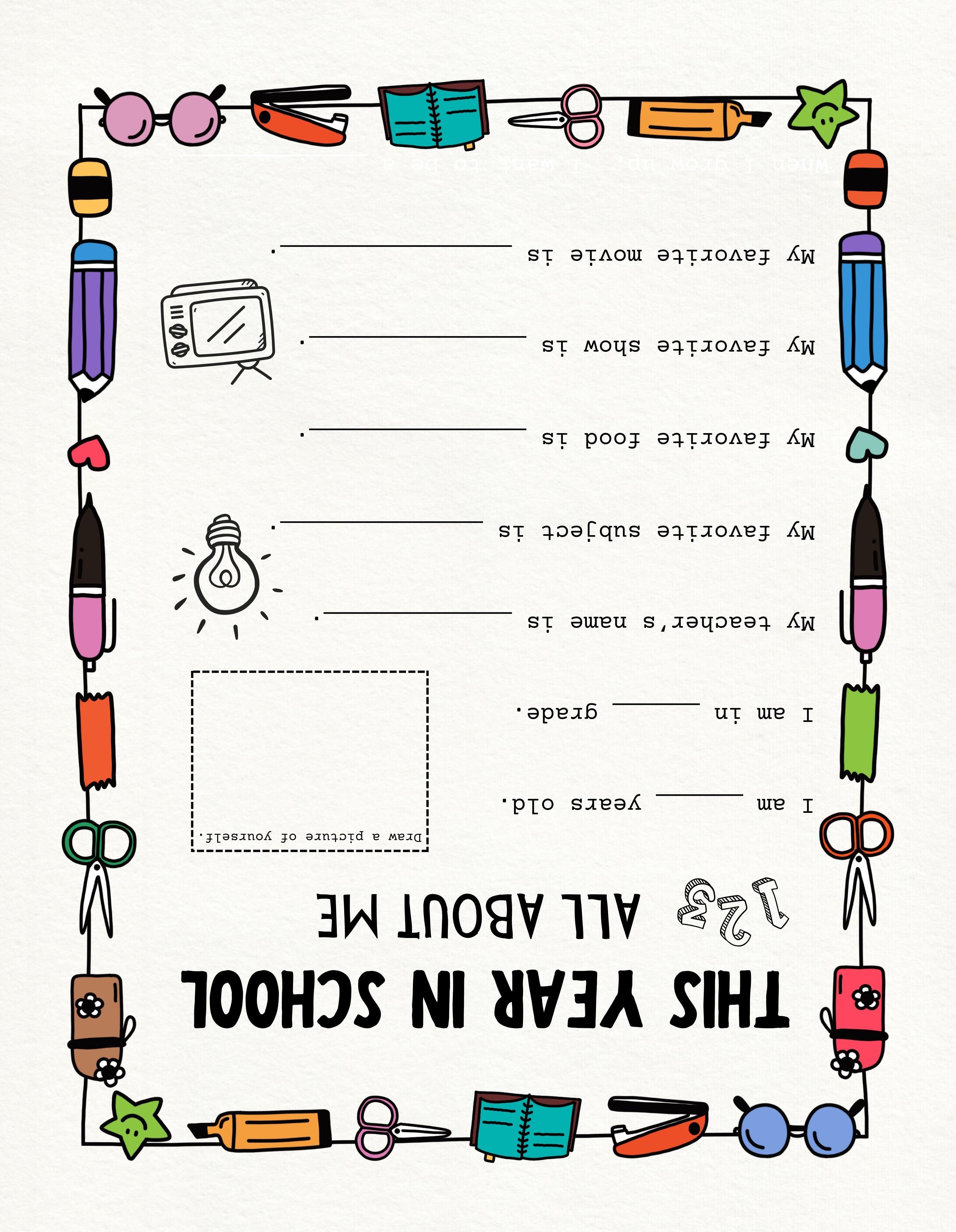





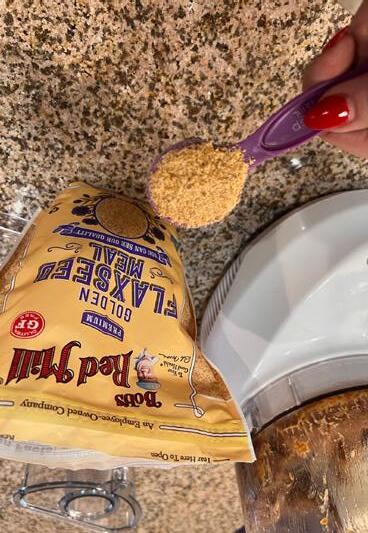



8. Leave them to cool for about 30 minutes before you remove them from the pan. ENJOY!
7. Remove from the oven and run a butter knife around the edges of the brownies.
6. Bake at 350’. For the mini muffin tin, 12-15 minutes, for the regular size muffin tin, 15-17 minutes. The edges should be crisp and the center a little doughy.
5. Dip your fingers in the rest of the coconut oil and press the brownie dough into each muffin tin. I only fill each muffin tin half way, whether it is with the regular sized muffin tin or mini.
4. With a tablespoon, scoop a heaping tablespoon into each tin. (If you are using the mini muffin tin, use a teaspoon). For a regular size muffin tin, this recipe will only fill 6 muffins. You will need to double the recipe to make 12. For a mini muffin tin, this will fill all of the spaces.
3. Add in your almond butter, ground flax seed, cacao powder, baking soda, vanilla extract, balsamic vinegar and sea salt. If you like your brownies with nuts in them, you may add a ½ cup of walnuts or pecans now as well. Blend again until smooth. You may add a teaspoon of hot water if it’s too thick.
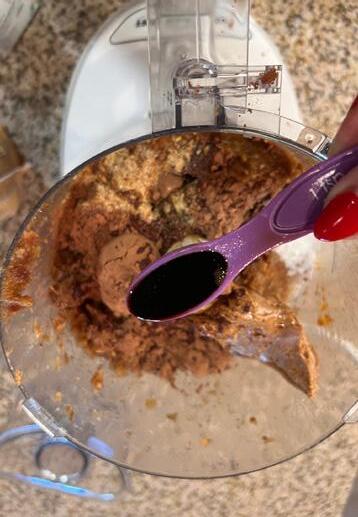



1. Preheat your oven to 350’. Grease your muffin tin with coconut oil. Save just a little bit of it for later.
• optional to add a ½ cup of pecans or walnuts Directions:
• A pinch of sea salt
• 2 teaspoons of balsamic vinegar
• 2 teaspoons of vanilla extract
• 1/2 teaspoon of baking soda
• 1/3 cup of organic cacao powder
• 1 tablespoon of ground golden flax seed (I use one from Bob’s Red Mill)
• 1/2 cup of almond butter (or any nut butter of your choice
• 1/4 cup of hot water (please have help with this)
• 1 cup of dates without the pits
• 1/4 cup of coconut oil
• A food processor or a blender
• A Mini muffin tin or a regular sized one
What You Will Need:
2. In your food processor (use the metal “S” blade) or blender, put your dates without the pits and the hot water in. Blend until it is a paste.
Everyone will taste your gratitude and happiness.
First, things first! Let’s get happy! If you can, turn on your favorite music and get ready to dance in the kitchen! And don’t forget to say a little blessing while you create these.
anyone that has one. For this recipe, I normally make them with my mini muffin tin, but I couldn’t find it when I went to make these for you. I did use a regular muffin tin and I just had to let them bake a little bit longer. Whichever size muffin tin you decide to use is up to you. For those of you going back to school, have an amazing year! For those of you that are not, how excited are you for autumn!
various versions but this one seems to be just right. Thank you to my friend Anne who reminded me of these! These brownie bites made from dates are not only good for you but taste just like a real brownie. You will be a hit with
With Back to School coming up, I wanted to share with you this recipe that brings a ton of joy to me. I have used
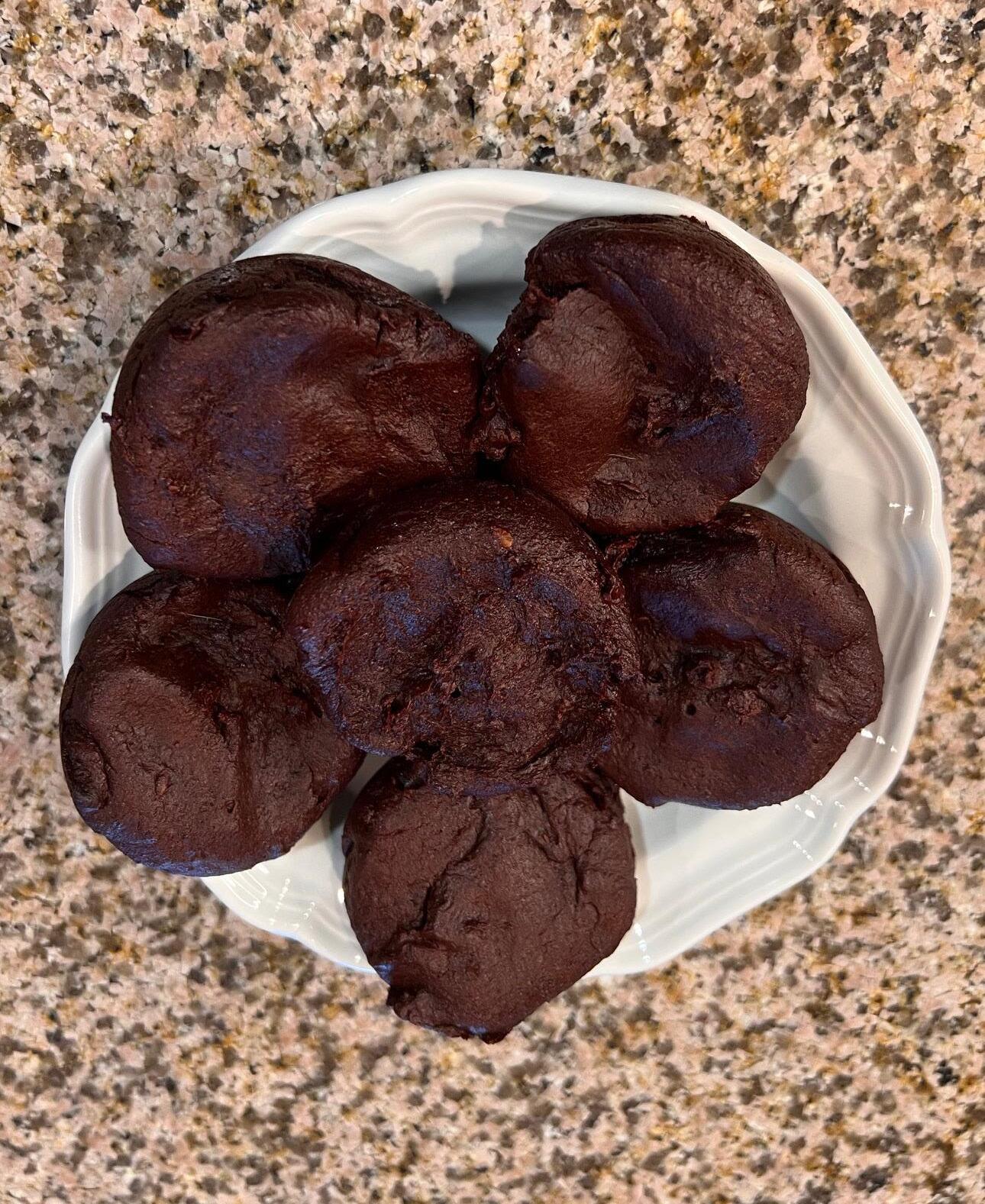






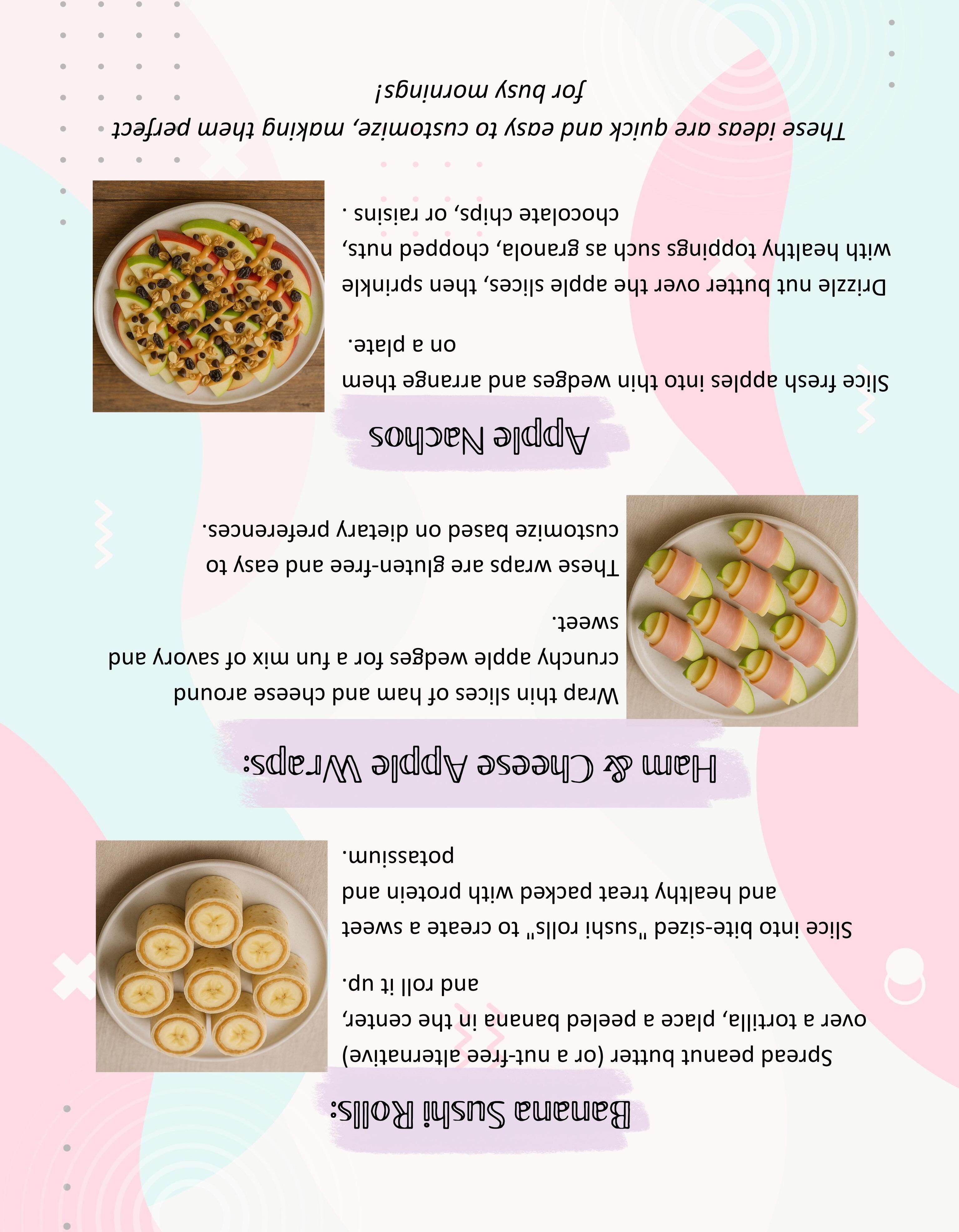

You may feel regular, but trust us—you’re growing into something amazing.
- AVERY, AGE 10
WHY DO GROWN-UPS ALWAYS SAY ‘YOU’RE GROWING UP SO FAST’? I FEEL REGULAR SPEED.

- CHRIS, AGE 6 You’re creatively focused. Leonardo da Vinci probably doodled during math too.
IF I DOODLE IN THE MARGINS BUT STILL GET THE RIGHT ANSWER, DOES THAT MAKE ME CREATIVE OR DISTRACTED?
If you need a forklift to carry it, maybe scale back. But being the “pencil guy” is a power move.
- ZAYDEN, AGE 8
ASKING FOR A FRIEND.
HOW MANY SHARPENED PENCILS IS TOO MANY TO CARRY IN YOUR BACKPACK?
- MILA, AGE 7 100%. Bonus points if you bow after.
IF I TRIP ON THE WAY TO CLASS BUT DO A COOL SPIN, CAN IT COUNT AS DANCING INSTEAD OF FALLING?

































